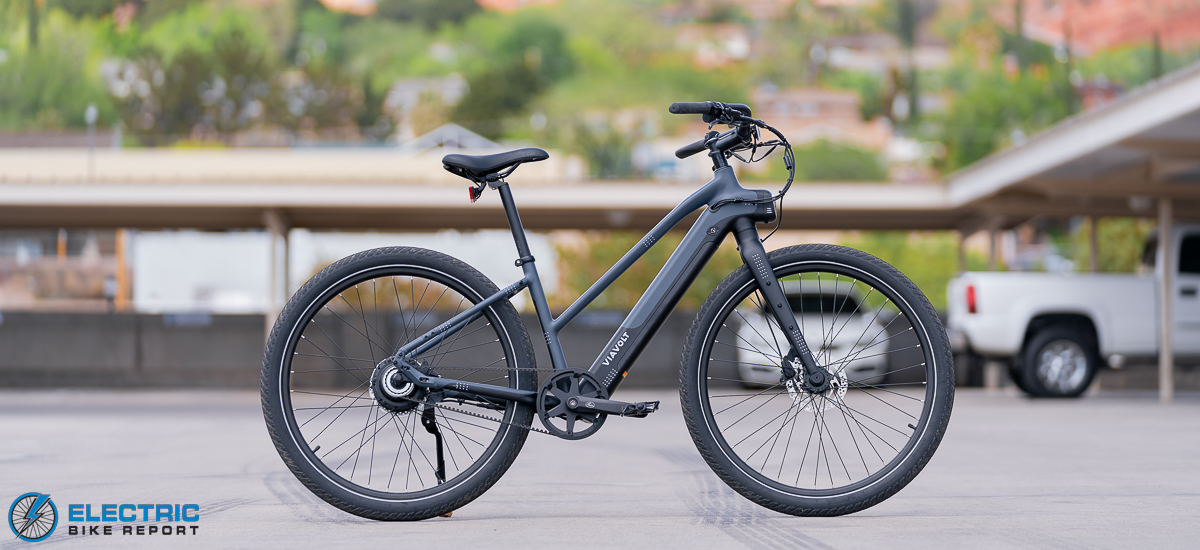I performed our Speed Test by riding the Vvolt Alpha II on a flat section of our local bike paths and recording my maximum speed in each pedal assist setting. I maintained a fairly casual – and consistent – level of effort throughout the test to observe the effect of each increase in power.
When starting with no pedal assist, the Alpha II pedaled fairly easily, though the single-speed drivetrain was somewhat difficult to get moving initially. I reached 11.6 miles per hour on leg power alone.
Then, when stepping up through the bike’s 5 pedal assist system (PAS) settings, I recorded 14.1 mph in PAS 1, 18 mph in PAS 2, 19.6 mph in PAS 3, and then 19.8 mph in both PAS 4 and 5. It’s worth noting that I was fighting a moderate headwind; the bike was able to reach its maximum speed of 20 mph effectively outside of the formal test when the breeze had settled.
When graphing this data (see above), the overall shape and the cluster of similar speeds starting at PAS 3 stood out as somewhat unusual. We usually expect a much more evenly-balanced distribution of speeds and power levels, and as a result, a much more linear shape on the graph.
As a bike with a single-speed drivetrain, however, the Alpha II had an expected limitation; this type of setup is notoriously difficult to balance, as the chainring and single cog need to be sized correctly to allow for effective pedaling on both flat ground and on hills. With this in mind, the bike’s programming made more sense. Its low power settings seemed to be geared toward use on flatter terrain, while PAS 4 or 5 seemed better suited to climbing. As it happens, this is exactly how Vvolt markets the bike, and overall this balance worked well.
Starting at around 15.5 mph but becoming unavoidable at around 17-18 mph, I experienced a phenomenon called ghost pedaling, where the bike’s speed exceeded its gearing, and my pedal effort was no longer able to contribute to moving the bike. This effect suggests that the Alpha II would benefit from a larger chainring, which would allow the rider to stay engaged at higher speeds. The bike’s current setup with a smaller chainring helped out on hills (see the Hill Test section of this Vvolt Alpha II review for more detail), but we would prefer to be able to step up to at least PAS 4 without ghost pedaling.
I also tested the bike’s “SafeSpeed” throttle, which had a reserved feel with gradually-building acceleration. This was not unexpected, as A) the bike’s 350-watt motor is relatively low-powered (though appropriate for its size, weight, and style); and B) Vvolt programmed the throttle to use 80% of the motor’s maximum output. This was an intentional decision with a few goals including the encouragement of pedaling, the conservation of battery power, and overall safety for aging and youthful riders. The original version of the Alpha did not include a throttle, so we appreciated its appearance on the Alpha II, and we appreciate that Vvolt programmed the bike with safety in mind — but we wouldn’t mind some additional pep in the future.
To balance out this critique, it is worth mentioning how much I enjoyed the bike’s zippy feel. Personally, I prefer active pedaling, so I found PAS 1 to be the most fun when riding on flat ground, and I appreciated the extra power of PAS 5 when pedaling uphill. Overall, while somewhat unconventional, the programming of the bike’s 350-watt motor felt appropriate for its intended purpose.
.
.
.
#Vvolt #Releases #Alpha
Source link









